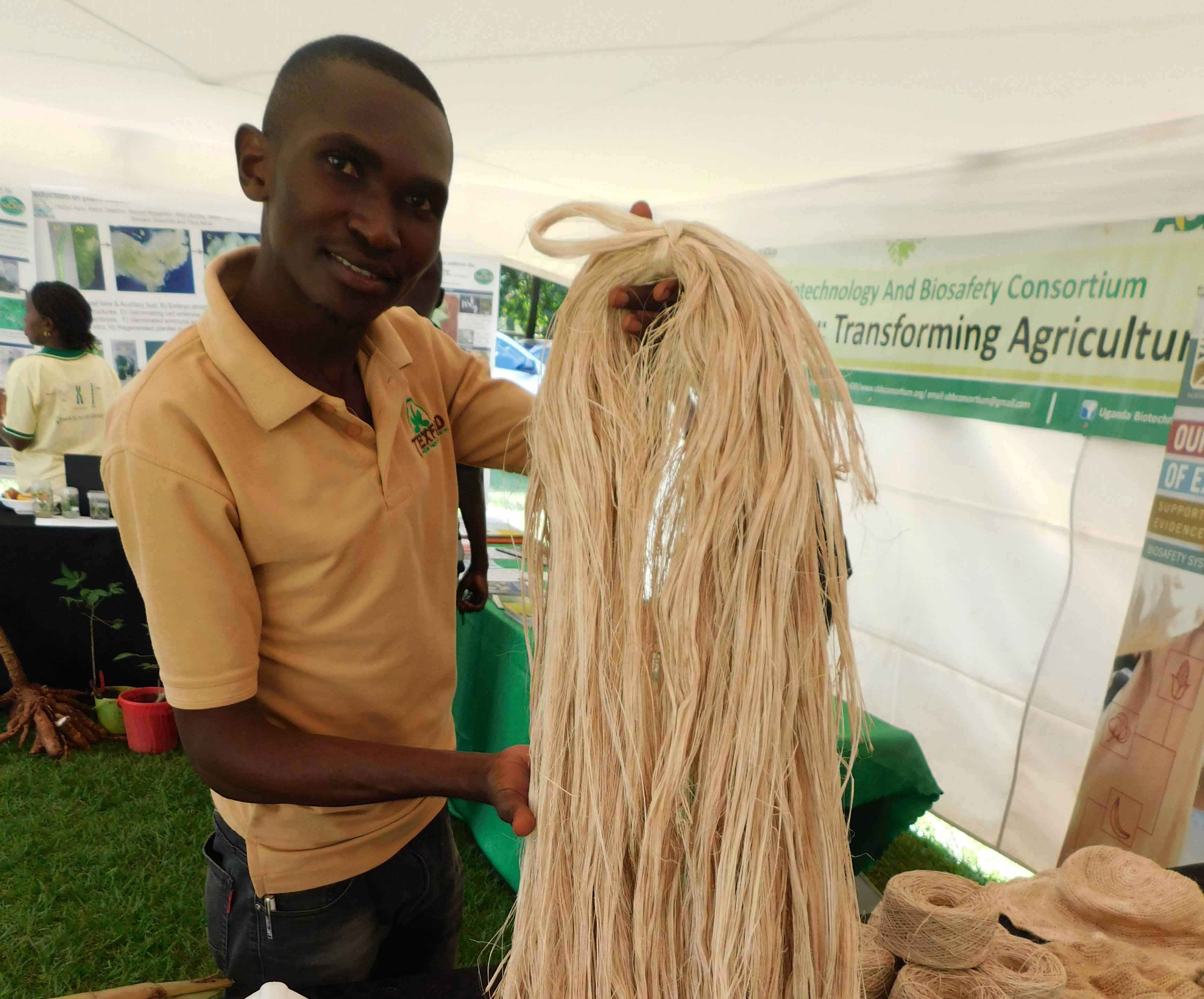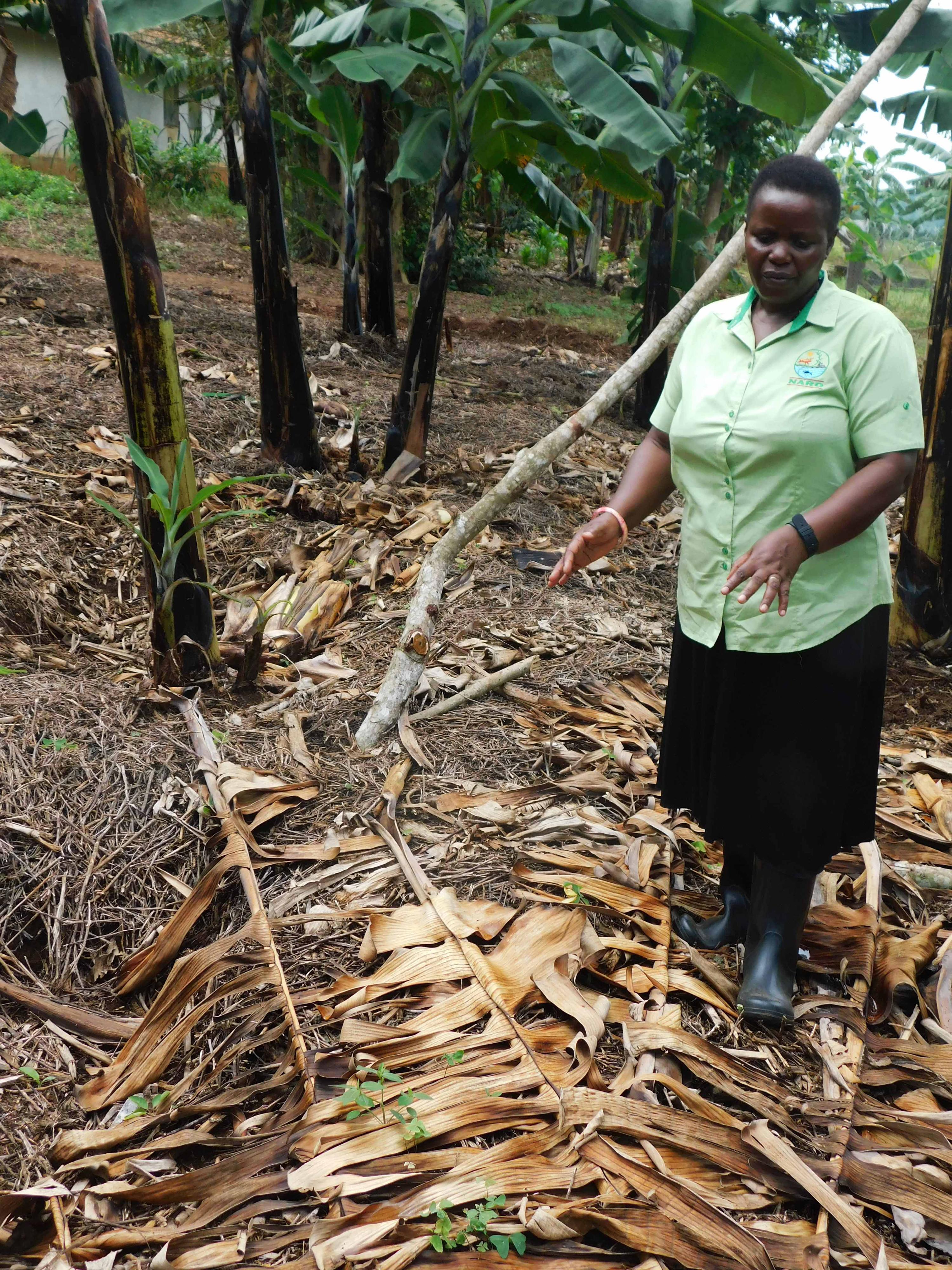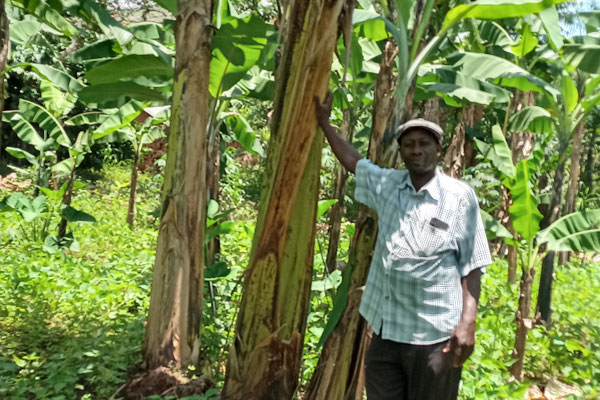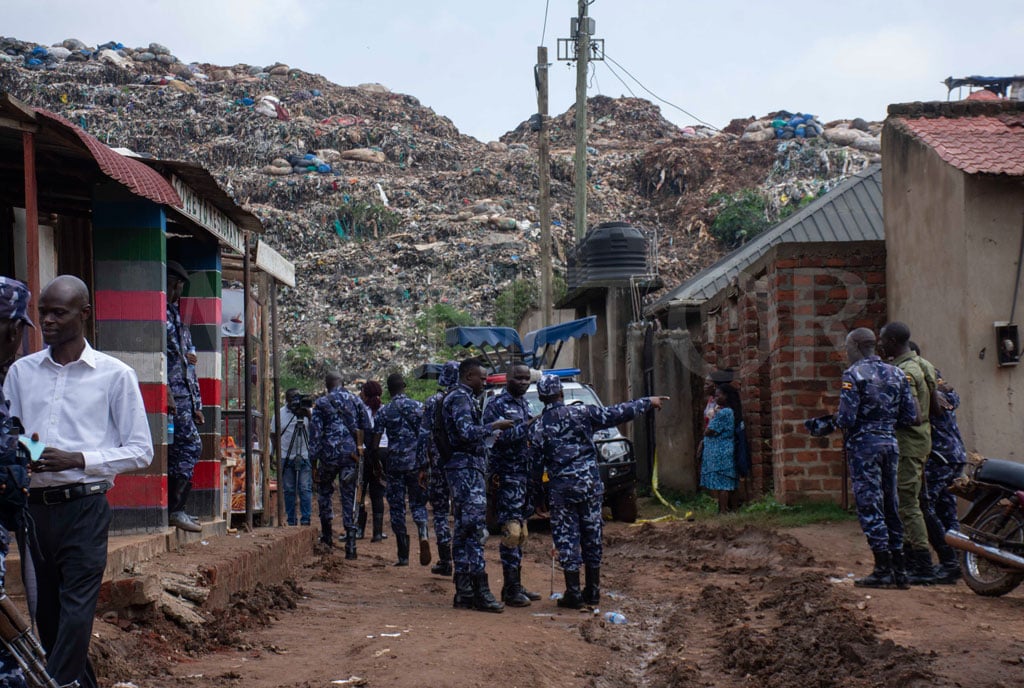Prime
Banana farming must be more than food production

Mr John Baptist Okello, business manager of Texfad displays banana fibre threads. Photo/Michael J Ssali
What you need to know:
- Texfad, which employs about 30 people, also has a skills training academy where young people receive training in producing articles out of banana fibre.
Uganda is said to be the leading banana producer in Africa and only second to India in the world.
According to Uganda Bureau of Statistics (UBOS), we had an increase of 28 percent in banana production, from 6.5 million metric tonnes in 2018 to 8.3 metric tonnes in 2019.
In 2003 Uganda was ranked highest globally in banana consumption with an annual per capita consumption of 1.5 kilogrammes per day.
Bananas are the main food crop to more than half the population of Uganda and it is ranked highest among the cash crops in Uganda at 67 percent followed by coffee at 22 percent and beans at 7 percent.
Innovation
However, according to Muturi Kimani, a lecturer at Kyambogo University, the banana sector in Uganda needs to be woken up from its deep sleep and made to rise to its rightful place in the economy of the country.
He says the crop has a much bigger economic value than is realised at the moment.
“It is a sector that is sleeping,” he says. And he has a point. Most people look at the banana crop as just food but as Kimani has proven, the crop is also a major raw material for the textile and apparel industry. Banana fibre is used to make beautiful mats, carpets, wigs, lamp shades, hats, sanitary pads, packaging paper, rugs, cloth, ropes, and a whole range of textile products.
Goldmine in banana
Erostus Nsubuga, chief executive officer and founder of Agro-Genetic Technologies Ltd (AGT) said, “As the leading banana producing country in Africa, Uganda should exploit this position to expand the banana fibre textile industry. We have the potential to be the biggest source of the manufactured fibre products on the continent. We must begin to think differently about the banana crop; it is not just a food crop but an important raw material for textile manufacturing which must be exploited to the fullest. ”

John Baptist Okello, business manager of Texfad, wears a hat made out of banana fobre. Photo/Michael J Ssali
In light of this vision, Kimani has founded Texfad Limited, headquartered at Kasaayi Village, Kyampisi Parish, in Mukono District which in collaboration with National Agricultural Research Organisation (Naro) has been operating since 2013 producing fibre mats, carpets, packaging paper, spinning thread and a lot of other products.
Texfad which employs about 30 people also has a skills training academy where young people receive training in producing articles out of banana fibre.
They have a show room for their products located in Kira, Imani Village Mall, in Kampala. Their stall at the recently held Naro exhibition at Namulonge turned out to be one of the most visited by the show goers who kept wondering how such beautiful items could be made out of banana fibre.
Usaid Mission Director in Uganda, Richard Nelson, who was the chief guest at the show, commended their effort upon seeing their products.
Biodegradable
John Baptist Okello, Texfad business manager, told Seeds of Gold, “We are overwhelmed by the demand for our products. Most of our customers are tourists, hotels, and restaurants. We also have a lot of customers from the general public particularly for mats, lamp shades, hats, and rugs.”
He said all products made out of banana fibre are biodegradable unlike polythene and plastic, and they are not in any way harmful to the environment.
Source of raw material
Aggrey Muganga team leader of Tupande Holdings Ltd, located at Kiwenda Village, Busukuma Sub-county, Nansana Municipality in Wakiso District, sells banana fibre to Texfad Limited.
“We drive all over the surrounding villages buying banana stems from farmers which we load on a truck and bring to the factory where we have fibre extractor machine,” Muganga narrated.
He “The banana stem comprises sheaths (known in Luganda as ebigogo) which we pull off one after another and put into the extractor machine. The machine then squeezes the sheath and removes all the biomass leaving just the sisal like white strands, which are the banana fibres. We must produce 300 kilogrammes of banana fibres every month which we sell to Texfad Ltd. To get 300 kilogrammes of banana fibre we must use 3000 banana stems.”

Mr Muturi Kimani, founder of Texfad Ltd, says the banana sector in Uganda is sleeping. Photo/Michael J Ssali
Uganda’s new ‘cotton’
Texfad further treats the fibre and it becomes nearly as soft as cotton and comes up with thread reels that are used for knitting.
Banana fibre is therefore Uganda’s good alternative for cotton. Muganga says the farmers are happy to earn money from the banana stems after harvesting the bananas and they are always eagerly waiting for the Tupande Holdings truck which collects the banana stems.
Challenges
He went on to disclose however that since the demand for banana fibre is so big, getting enough banana stems is a big challenge.
Their banana stem catchment area, as he revealed, is about 60 banana farmers.
Tupande Holdings Ltd which has been in operation since 2022 is therefore already thinking of relocating to another area where there are more banana farmers in order to get bigger numbers of banana stems to meet the fast growing market demand.
Expanding horizons
David Bangirana, of Kyenkunga Cell, Kyagaju Ward, Shema Municipality, in Shema District heads a group of banana farmers known as Kyagaju Banana Fibre Enterprises.
His group is one of the many suppliers of banana fibres to Texfad Ltd.
Bangirana had to buy his own banana fibre extractor, fabricated in Kampala at a cost of Shs5m.
“I have long since recovered all the money in just a year after purchasing it,” he revealed.
He said that after extracting fibre from the banana stems he sells back to the farmers some of the biomass that remains which they use as manure on their farms.
“We retain some of the biomass which we dry under the sun and use to make cooking brickets which are an alternative to charcoal and firewood. That way many of our people here don’t have to use firewood for cooking. The brickets take time to burn and we find them very energy-saving,” he said.
Manure
He also said that besides the biomass being good manure and source of energy, it is also good feed for cattle, goats, and rabbits.
He appeals to the government to pay more attention to banana fibre production as a raw material for a lot of possible textile and apparel technology innovations. He claims that Shema District being a leading banana farming district, the promotion of fibre textile technology can turn it into an industrial hub and greatly reduce poverty levels.




